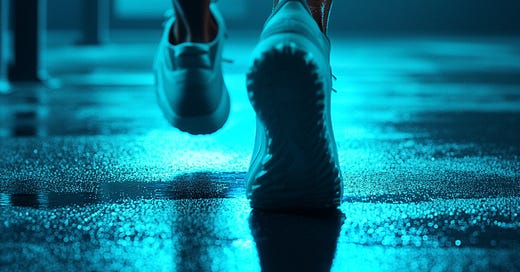Calf Muscle Fatigue and Running
Ways to improve running performance and reduce fatigue and injury risk.
This study explored how fatigue during high-intensity middle-distance running affects lower limb biomechanics, focusing on the role of the plantar flexors (calf muscles). By analysing changes in joint movement, muscle activation, and force production, the research aimed to identify strategies to improve running performance.
PMID: 33935231
Key Points
Aim: To examine neuromechanical changes, particularly in lower limb joints and muscles, during a high-intensity run to exhaustion.
Methods:
18 competitive middle-distance runners (11 males, 7 females) performed a high-intensity run on a treadmill at unsustainable speeds (~3 minutes to exhaustion).
Data on kinematics (joint angles), kinetics (forces and moments), and muscle activation (via surface electromyography) were collected at four time points: start, 33%, 67%, and end of the run.
Muscle fatigue was inferred from changes in joint mechanics and muscle activation patterns.
Results:
Fatigue led to:
Increased ground contact time (+4%) and reduced flight time (-3.2%).
Decreased peak vertical ground reaction force (-6.1%) and vertical impulse (-4.1%).
Reduced ankle plantar flexion moment (-9%) and work (-13.9%), indicating significant fatigue in the plantar flexors.
Compensatory increases in knee extension moment (+10.3%) and work (+33.3%).
No significant changes in hip joint work.
Increased muscle activation of hip extensors during late swing phase (+20-37%).
Time to exhaustion was approximately 181 seconds.






